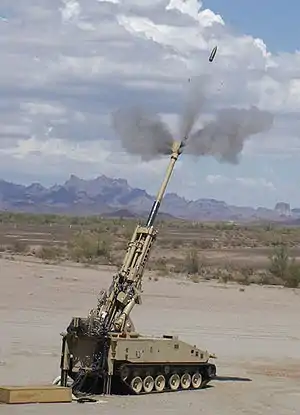Weapon testing
Weapon testing are experiments carried out to confirm the validity of a weapon concept. Some weapon tests are carried out as a scare tactic to deter war. Weapon testing has gradually given way to weapons that are correct by design.

When testing the Bradley Fighting Vehicle, disagreements occurred between program manager James Burton and the Aberdeen Proving Ground's Ballistic Research Laboratory, which preferred smaller, more controlled, "building block" tests. They claimed such limited (and according to Col. Burton, completely unrealistic) testing would "improve the databases used to model vehicle survivability" as opposed to full tests with random shots that would provide a far more accurate of its performance under real battlefield conditions, but produce less useful statistical data.[1] In addition, Burton insisted upon a series of "overmatch" tests in which weapons would be fired at the Bradley that were known to be able to easily penetrate its armor, including Russian ordnance. Burton saw attempts to avoid such tests as dishonest, while the BRL saw them as wasteful, as they already knew the vehicle would fail.[1] The disagreements became so contentious that Congressional inquiry resulted. As a result of the tests, additional improvements to vehicle survivability were added.
References
- Haworth, W. Blair (1999). The Bradley and How It Got That Way: Technology, Institutions, and the Problem of Mechanized Infantry in the United States Army. Westport, Conn.: Greenwood Press. ISBN 978-0-313-30974-8.
